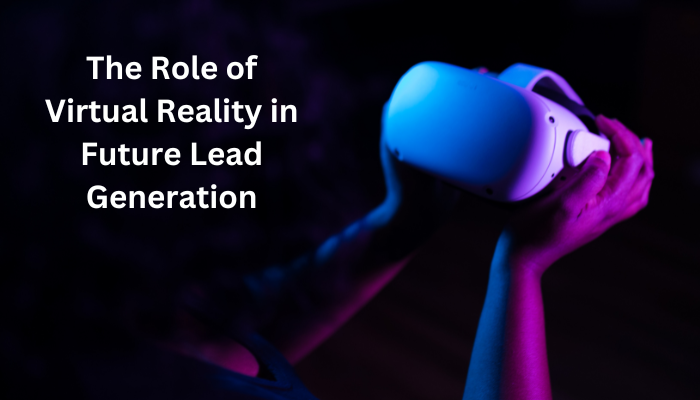
The Role of Virtual Reality in Future Lead Generation
January 11, 2024 Comment off
The landscape of lead generation is continuously evolving, with technology playing a pivotal role in shaping its future. Among the most exciting and transformative technologies is Virtual Reality (VR), which promises to revolutionize how businesses attract and engage potential customers. This article delves into the burgeoning world of VR and its potential impact on lead generation strategies in the years to come.
Understanding Virtual Reality in Marketing:
Virtual Reality is an immersive technology that transports users into a three-dimensional, computer-generated environment. In marketing, VR offers a unique opportunity to create deeply engaging and interactive experiences that can captivate potential leads like never before.
The Advantages of VR in Lead Generation:
- Immersive Experience: VR provides a fully immersive experience, making it possible to engage leads in a more profound and memorable way.
- Enhanced Product Demonstrations: With VR, businesses can showcase their products or services in a highly detailed and interactive manner, beyond what’s possible in the physical world.
- Emotional Connection: The immersive nature of VR can evoke stronger emotional responses, leading to better brand recall and loyalty.
- Data Collection and Analytics: VR experiences can be designed to collect valuable data on user interactions, preferences, and behaviors, offering insights for targeted marketing strategies.
Innovative Uses of VR in Lead Generation:
- Virtual Showrooms and Tours: Businesses can create virtual showrooms or tours, allowing leads to explore products or properties in a detailed and interactive environment.
- Interactive Product Demonstrations: VR can be used to demonstrate complex products, allowing potential customers to interact with them in a virtual space.
- Virtual Events and Trade Shows: With VR, companies can host virtual events or participate in virtual trade shows, reaching a wider audience without geographical constraints.
- Gamified Experiences: Incorporating gamification into VR experiences can increase engagement and make the lead generation process more enjoyable and memorable.
Challenges and Considerations:
- Accessibility: Ensuring that target audiences have access to VR technology is crucial for the success of VR-based lead generation strategies.
- Content Quality: High-quality, engaging VR content is essential to captivate and retain the interest of potential leads.
- User Experience: A seamless and user-friendly VR experience is critical to prevent frustration or disengagement.
- Cost: Developing VR content can be costly, and businesses need to weigh the investment against the potential ROI.
The Future of VR in Lead Generation:
As VR technology becomes more accessible and affordable, its role in lead generation is set to grow exponentially. We can expect to see more personalized and interactive VR experiences, tailored to individual preferences and behaviors. The integration of AI with VR could also lead to more sophisticated and adaptive experiences, further enhancing lead engagement and conversion rates.
Virtual Reality holds immense potential for transforming lead generation, offering unprecedented levels of engagement and interaction. As we look to the future, businesses that embrace and innovate with VR technology will likely gain a competitive edge, attracting and converting leads in ways that were once unimaginable. The journey into the virtual world is just beginning, and its impact on lead generation will be a fascinating evolution to watch.